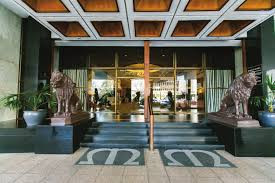
GOVERNMENT intends to adopt an energy mix-based tariff structure as opposed to the prevailing commodity-based tariff for mining companies to ensure production efficiency, Energy and Power Development minister Joram Gumbo has said.
BY MTHANDAZO NYONI

A commodity-based tariff is the one which is linked to the commodity prices whereas an energy mix-based tariff looks at all forms of energy and it determines the overall average tariff in the end.
The energy mix-based tariff allows cost recovery for a utility so that it remains profitable and commodity-based tariff is used to support industry in times of difficulty.
Addressing delegates attending the Mine Entra 2018 conference held in Bulawayo on Thursday, Gumbo said there was need to ensure that the energy industry continued to operate efficiently and effectively by providing adequate and reliable energy through charging of cost-reflective tariffs.
“Currently, the mining sector consumes about 20% (300 megawatts) of the total national electricity demand and value addition requires investment in smelters which require more energy. This is critical as more value is created on the country’s minerals,” he said.
The average electricity tariff is 9,85US cents per kilowatt hour (kWh).
But for ferrochrome miners the tariff is 6,25USc/kWhr.
- Chamisa under fire over US$120K donation
- Mavhunga puts DeMbare into Chibuku quarterfinals
- Pension funds bet on Cabora Bassa oilfields
- Councils defy govt fire tender directive
Keep Reading
“Going forward, government intends to adopt an energy mix-based tariff structure as opposed to the prevailing commodity-based tariff for the mining companies,” Gumbo said.
Miners have been urging national power utility — Zesa Holdings — to reduce its electricity tariffs in an effort to boost the country’s mineral output.
But Gumbo said Zesa could not continue supplying power at lower than its cost of production.
“It is important to note that imports from regional utilities are very costly and the costs of production from thermal power stations are very expensive due to old age. Realising that government alone cannot win the war to provide electricity, the sector was opened for private sector participation in electricity generation,” he said.
Gumbo said the power sector was facing a plethora of challenges, chief among them the high cost for the old thermal power generating plants averaging US6,5c/kWhr.
The sector also faces foreign currency challenges to procure spares and equipment; theft and vandalism of Zesa infrastructure targeting transformer oil and copper cables; high upfront costs for renewable energy technologies as well as high cost of capital for financing power expansion projects.
Gumbo said there were many opportunities for mining companies to invest in the energy sector products especially energy storage through the beneficiation of lithium to lithium ion batteries.
“Investments into new technologies include the coal-to-liquid fuels and coal bed methane for power generation. There is room for the mining companies to participate in power generation through registering as independent power producers (IPPs) for own use and supply excess into the national grid,” he said.
“Mining companies should also participate in energy efficiency programmes to reduce energy consumption,” he said.
He said the provision of adequate, reliable and cost-reflective energy would remain key as the country moved towards attaining a middle-income economy by 2030.
The country’s current daily maximum demand is about 1 700MW against an average internal generation of 1 450MW, leaving a supply gap of up to 250MW during peak times.
This demand is met through internal generation and imports from HCB of Mozambique and Eskom of South Africa.
“Demand is projected to double by 2030 against increased economic growth across sectors,” Gumbo said.
He said the country had now gone for a period of two and a half years without load-shedding mainly due to the additional 300MW commissioned at Kariba bringing the total capacity at Kariba to 1 050MW; increased water allocation from Kariba Dam for power generation of 17 billion cubic metres in 2018; improved generation from Hwange; demand side management—use of payment metering system with a total of 628 851 meters installed saving about 300MW as well as imports from HCB and Eskom.
Gumbo said government was currently pursuing capacity expansion projects to ensure self-sufficiency in energy including the construction of the 600MW Hwange expansion project and the 1200MW Batoka hydro project.
He said several IPPs had also been licensed with a combined capacity to produce more than 5 000MW.
Government is also in the process of developing the National Integrated Energy Resource Plan to establish the available energy potential in the country.










